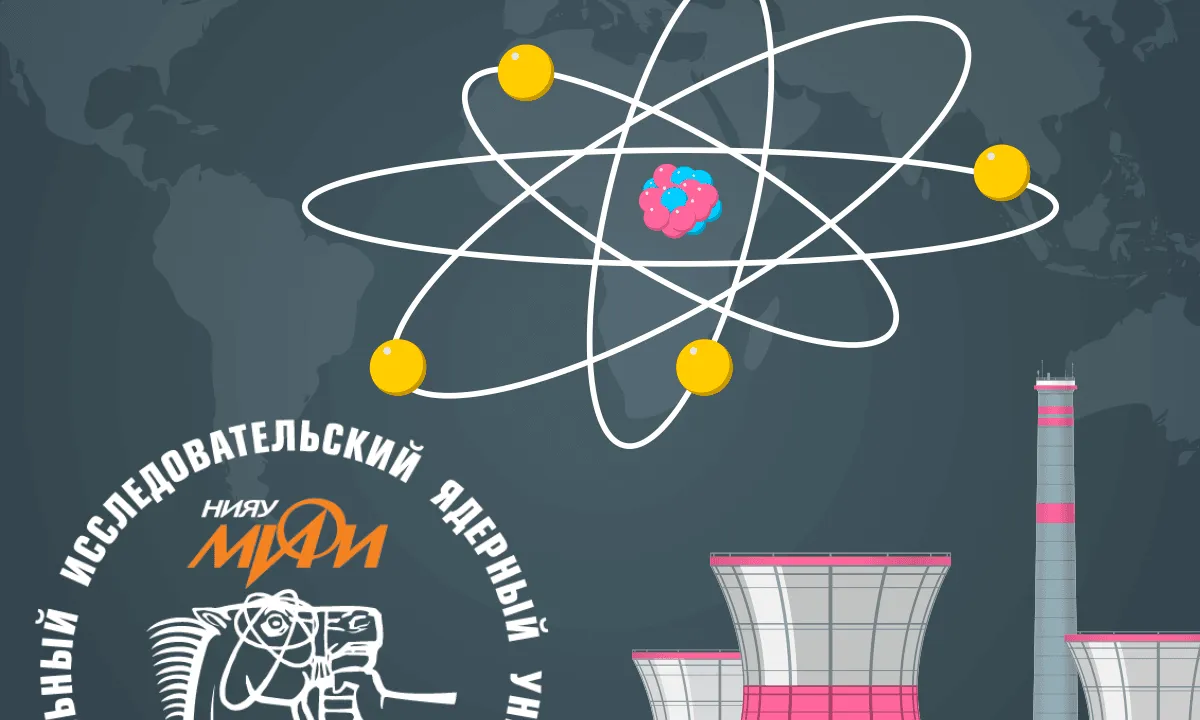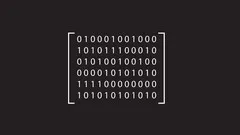
Fundamentals of Modern Russian-designed NPPs with VVER-1200 
This course provides an overview of the fundamentals of modern Russian-designed NPPs with VVER-1200 reactors, including an introduction to pressurized water reactor technology and the Generation III+ NPP design. ▼
ADVERTISEMENT
Course Feature
![]() Cost:
Cost:
Free
![]() Provider:
Provider:
Coursera
![]() Certificate:
Certificate:
No Information
![]() Language:
Language:
English
![]() Start Date:
Start Date:
21st Mar, 2022
Course Overview
❗The content presented here is sourced directly from Coursera platform. For comprehensive course details, including enrollment information, simply click on the 'Go to class' link on our website.
Updated in [March 06th, 2023]
Learners can gain a comprehensive understanding of the fundamentals of modern Russian-designed Nuclear Power Plants (NPPs) with VVER-1200 reactor through this course. They will learn about the design features of the NPPs, safety issues, and the advantages of the VVER-1200 reactor. The course also provides an overview of the basic education program and related learning suggestions. Learners will be able to access video lectures, quizzes, textbooks, and a forum to communicate with other trainees. They can also contact “Rusatom Service” JSC for an instructor-led assessment of their understanding of the course materials. This course is a great opportunity for learners to gain a comprehensive understanding of the fundamentals of modern Russian-designed NPPs with VVER-1200 reactor.
[Applications]
Upon completion of the course, participants are encouraged to apply the knowledge gained to their professional activities. This may include the development of safety plans for nuclear power plants, the implementation of safety measures, and the assessment of the safety of existing nuclear power plants. Additionally, participants may use the course materials to inform their colleagues and the public about the safety of nuclear power plants.
[Career Paths]
1. Nuclear Power Plant Engineer: Nuclear Power Plant Engineers are responsible for the design, construction, and operation of nuclear power plants. They must have a strong understanding of nuclear physics, engineering, and safety protocols. As the demand for clean energy increases, the need for Nuclear Power Plant Engineers is expected to grow.
2. Nuclear Safety Officer: Nuclear Safety Officers are responsible for ensuring that nuclear power plants are operated safely and in compliance with all regulations. They must have a strong understanding of nuclear physics, engineering, and safety protocols. As the demand for clean energy increases, the need for Nuclear Safety Officers is expected to grow.
3. Nuclear Regulatory Inspector: Nuclear Regulatory Inspectors are responsible for ensuring that nuclear power plants are operated safely and in compliance with all regulations. They must have a strong understanding of nuclear physics, engineering, and safety protocols. As the demand for clean energy increases, the need for Nuclear Regulatory Inspectors is expected to grow.
4. Nuclear Waste Management Specialist: Nuclear Waste Management Specialists are responsible for the safe disposal of nuclear waste. They must have a strong understanding of nuclear physics, engineering, and safety protocols. As the demand for clean energy increases, the need for Nuclear Waste Management Specialists is expected to grow.
[Education Paths]
1. Nuclear Engineering Degree: Nuclear engineering is a field of engineering that focuses on the development and application of nuclear energy. It is a rapidly growing field, with new technologies and applications being developed every day. Nuclear engineers are responsible for designing, constructing, and operating nuclear power plants, as well as researching and developing new nuclear technologies. This degree is ideal for those interested in the development and application of nuclear energy, and is a great way to get involved in the nuclear industry.
2. Mechanical Engineering Degree: Mechanical engineering is a field of engineering that focuses on the design, construction, and operation of machines and mechanical systems. Mechanical engineers are responsible for designing, constructing, and operating machines and mechanical systems, as well as researching and developing new technologies. This degree is ideal for those interested in the design and operation of machines and mechanical systems, and is a great way to get involved in the engineering industry.
3. Electrical Engineering Degree: Electrical engineering is a field of engineering that focuses on the design, construction, and operation of electrical systems. Electrical engineers are responsible for designing, constructing, and operating electrical systems, as well as researching and developing new technologies. This degree is ideal for those interested in the design and operation of electrical systems, and is a great way to get involved in the engineering industry.
4. Computer Science Degree: Computer science is a field of study that focuses on the design, construction, and operation of computer systems. Computer scientists are responsible for designing, constructing, and operating computer systems, as well as researching and developing new technologies. This degree is ideal for those interested in the design and operation of computer systems, and is a great way to get involved in the computer science industry.
The development trends for these degrees are rapidly changing as technology advances. Nuclear engineering is becoming increasingly important as the world moves towards renewable energy sources, and mechanical engineering is becoming more important as automation and robotics become more prevalent. Electrical engineering is becoming more important as the world moves towards smart grids and the Internet of Things, and computer science is becoming more important as the world moves towards artificial intelligence and machine learning.
Course Syllabus
Main concepts of nuclear physics. Fundamentals of reactor physics
The first part of the course has several terminal training objectives. First, to explain the fundamentals of nuclear physics essential for nuclear safety, and second, to explain the fundamentals of reactor physics. This distinction is very important: nuclear physics and reactor physics are quite different technologically. The corresponding training objectives are: to introduce the concepts of nuclear reactions (binding energy, cross-sections); to describe the basic concept of fission energy release; to explain the principle of controlled chain reaction. In this part of the course, the following topics about the nuclear physics fundamentals are covered: the discovery of nucleus; the discovery of neutron; binding energy; neutron cross-sections; the principle of nuclear reactor.Engineering fundamentals of nuclear power generation. Basics of VVER technology
The terminal training objectives of the second part of the course are as follows: first, the physical aspects of nuclear fuel burnup are discussed – this is one of the main characteristics of reactor performance from the viewpoint of economic efficiency and many other factors. Second, main specific features of VVER technology are described in comparison with the western type reactor (PWR).The corresponding enabling training objectives are: to describe the mechanism of nuclear fuel burnup; to identify the contribution of uranium and plutonium to energy release in a power reactor; to describe the reactivity coefficients and their relation to safety; to list distinguishing features of VVER technology vs PWR technology. The following topics are covered in this part of the course: structural materials of nuclear power reactors; the concept of fuel burnup; plutonium accumulation in nuclear power reactor; basics of safe operation of nuclear power reactors: relativity effects; comparison of specific characteristics of VVER technology versus pressurized water reactors (PWR) technology; advanced nuclear fuel types for nuclear power reactors in Russia.Specifics of VVER Reactor facility
The third part of the course has the following terminal training objectives: first, to explain the VVER-1200 reactor facility design, and second, to identify the features of Modern Russian designed NPP with VVER 1200 power reactor. The corresponding enabling training objectives are: to identify the principle of electricity production at a nuclear power plant with VVER-1200; to describe the primary circuit flow diagram; to list the main equipment of VVER-1200 nuclear steam supply system; to describe the natural circulation features of VVER. The following topics are covered in this part of the course: Introduction to VVER technology, its advantages and disadvantages; VVER fuel, absorbers used for VVERs, and relevant reactor physics; VVER components: steam generator, main circulation pumps, etc. their operation and main parameters of the components; Introduction to natural circulation: natural circulation in VVER, and principles of its arrangement in practice. VVER operation: operational modes and states of VVER.Design Solutions of reactor auxiliary system and turbine part
The terminal training objective of the fourth part of the course is to identify the technological features of auxiliary systems and the secondary circuit. The corresponding training objectives are: to describe the characteristics of the steam turbine; to discuss the main systems of the secondary circuit of Modern Russian designed NPP with VVER 1200 power reactor; to describe spent fuel handling system of Modern Russian designed NPP with VVER 1200 power reactor. The following topics will be covered in this part of the course: main systems of the primary circuit; operation of the auxiliary systems under normal operating conditions; turbine island; handling of spent nuclear fuel.VVER safety systems
In the last part of the course, VVER safety systems are discussed. The terminal training objectives are: 1) to list the safety systems used to carry out functions for design basis (DBC) and design extension (DEC-A) conditions, 2) to list the NPP with VVER 1200 safety systems. The corresponding enabling training objectives are: to familiarize trainees with the basic requirements and nuclear safety approaches implementation in the Modern Russian designed NPP with VVER 1200 power reactor; to describe the defence-in-depth concept implementation for the NPP with VVER 1200; to list the VVER safety systems; to describe the principles of safety system operation of the NPP with VVER. The following topics are covered in this part of the course: safety fundamentals for NPPs: main aspects relevant to safety of NPPs and responsibility; design and safety functions: legal acts and requirements for safety, from the top level down to safety systems of NPPs; detailed description of VVER safety systems based on basic safety functions for NPPs: a. reactivity control; b. heat removal from nuclear fuel; c. localization of activity.Course Provider

Provider Coursera's Stats at AZClass
Discussion and Reviews
0.0 (Based on 0 reviews)
Explore Similar Online Courses

Product Management & Marketing: Personas

Introduction to Web and eCommerce User eXperience Design

Python for Informatics: Exploring Information

Social Network Analysis

Introduction to Systematic Review and Meta-Analysis

The Analytics Edge

DCO042 - Python For Informatics

Causal Diagrams: Draw Your Assumptions Before Your Conclusions

Whole genome sequencing of bacterial genomes - tools and applications

Matrices for physics

AP Physics C - Electricity & Magnetism: Exam Prep

Free Physics Tutorial - Basics of Physics - Motion
 Related Categories
Related Categories
 Popular Providers
Popular Providers
Quiz
 Submitted Sucessfully
Submitted Sucessfully
1. What is the goal of the course?
2. What materials are available for the online course?
3. Who is the course intended for?
4. To contact “Rusatom Service” JSC, please send a message to _________.
Correct Answer: [email protected]


Start your review of Fundamentals of Modern Russian-designed NPPs with VVER-1200